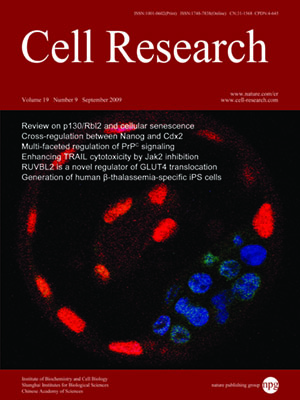
Volume 19, No 9, Sep 2009
ISSN: 1001-0602
EISSN: 1748-7838 2018
impact factor 17.848*
(Clarivate Analytics, 2019)
Volume 19 Issue 9, September 2009: 1044-1051
REVIEWS
Senescence and p130/Rbl2: a new beginning to the end
Francesco P Fiorentino1,2, Catherine E Symonds2, Marcella Macaluso2 and Antonio Giordano2,3
1Section of Medical Oncology, Department of Oncology, Regional Reference Center for the Biomolecular Characterization and Genetic Screening of Hereditary Tumors, Universit?di Palermo, Via del Vespro 127, 90127, Palermo, Italy
2Department of Biology, Sbarro Institute for Cancer Research and Molecular Medicine, Center for Biotechnology, College of Science and Technology, Temple University, BioLife Science Bldg. Suite 333, 1900 N 12th Street, Philadelphia, Pennsylvania 19122, USA
3Department of Human Pathology and Oncology, University of Siena, Siena, Italy
Correspondence: Antonio Giordano,(giordano@temple.edu)
Senescence is the process of cellular aging dependent on the normal physiological functions of non-immortalized cells. With increasing data being uncovered in this field, the complex molecular web regulating senescence is gradually being unraveled. Recent studies have suggested two main phases of senescence, the triggering of senescence and the maintenance of senescence. Each has been supported by data implying precise roles for DNA methyltransferases, reactive oxygen species and other factors. We will first summarize the data supporting these claims and then highlight the specific role that we hypothesize that p130/Rbl2 plays in the modulation of the senescence process.
Cell Research (2009) 19:1044-1051. doi: 10.1038/cr.2009.96 published online 11 August 2009
FULL TEXT | PDF
Browse 1944


